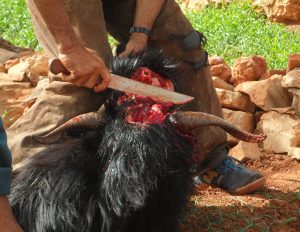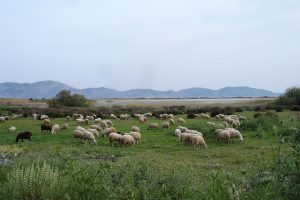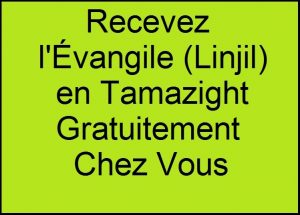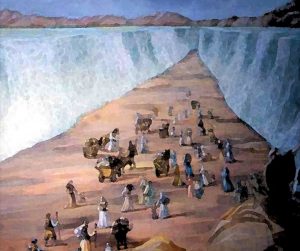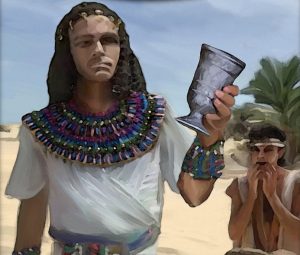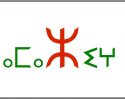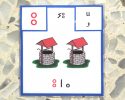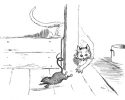Qui sont les Imazighen?
L’Histoire des Imazighen
Pour télécharger cette vidéo (en français), cliquez ici (1 fichier MP4, 411 MO).
Histoire des Imazighen de tamaz video sur Vimeo.
Histoire: Empereur Amazigh Romain
Septimus Severus–Empereur Amazigh Romain
« Septime Sévère (Lucius Septimius Severus Pertinax) (11 avril 145 – 4 février 211) est un empereur romain d’origine africaine (Berbère), qui règne de 193 à 211. Avec lui commence l’arrivée au pouvoir de provinciaux d’ascendance non romaine et la dynastie des Sévères dont il est l’éponyme. Il est le seul empereur né dans la province d’Afrique. »
Pour plus d’information, voir le lien suivant (d’où est tiré le paragraph ci-dessus):
Tifinagh en vidéo
Le corbeau
G tizwiri n ddunit iga aheqqar umlil, yazen ɣurs nnbi, ṣalla allah ƹlih wa sellem, inna-s “Aɣac ddheb, cfi-t i inselmen; aɣac tixxuyin, cfi-tent i irumin.”
Ikker ntta, icfa-sen i irumin ddheb, icf i inselmen tixxuyin. Imsex-t rebbi iƹayd ijjij nnes abercan. Adday isawal la ittini “Ƹaq, ƹaq!” zeƹma “xxict-i, ɣedrex lmant.”
Idda-d wawal-ad zeg E. Laoust, Cours de Berbère Marocain: Dialecte du Maroc Central, Paris, 1939, p. 240, numéro 1.
La langue tamazight


Dictionnaire Tamazight-Français (Parlers du Maroc central)
Auteur: Miloud Taifi

Dictionnaire Tamazight-Arabe
Auteur: Mohamed Chafik
Liens sur Tamazight et Tifinaghe
Téléchargez des polices de l’alphabet Tifinaghe-Ircam pour l’ordinateur
École Amazighe : des jeux pour apprendre l’aphabet tifinaghe et la langue Tamazight
Ecoutez l’alphabet tifinagh
Swathmore.edu : bibliographie linguistique
Wikipedia :
Demande d’une Wikipedia en Tamazight
Bibliomonde.com : les langues du Maroc
Tableau du Tifinagh-Ircam Table de Tifinagh – Ircam
Proverbes Amazighs
Devinettes Amazighes
Cliquez sur la question pour trouver la solution.
1. Nzerx-ac-tt-i-n: La ttawi awal, ur da tsawal.
J’en ai une pour toi: J’apporte une parole mais je ne parle pas. Qui suis-je?
2. Nzerx-ac-tt-i-n: Ibbi yaman ur immiɣ.
J’en ai une pour toi: J’ai traversé l’eau sans me mouiller. Qui suis-je?
3. Nzerx-ac-tt-i-n: Ur da ttaru ɣas s isfuruḍen.
J’en ai une pour toi: Je n’accouche que par des coups de pieds. Qui suis-je?
4. Nzerx-ac-tt-i-n: La-s iddal iswi, ur da-tt ittasi ulɣem.
J’en ai une pour toi: Un simple van peut me couvrir, mais un chameau ne peut me porter.
Qui suis-je?
5. Nzerx-ac-tt-i-n: Ilula-d s tamart, immut bla tamart.
J’en ai une pour toi: Je suis né avec une barbe, mais je suis mort sans barbe. Qui suis-je?
6. Nzerx-ac-tt-i-n: Tegdem da ur tenɣil.
J’en ai une pour toi: Je me suis renversé sans déverser. Qui suis-je?
Amazigh culture has a tradition of riddles. These riddles are told with a specific formula, somewhat like the English: “What’s black and white and read all over? A newspaper.” First, an introductory phrase is given, announcing “I’m going to tell you a riddle.” Then one or two short statements are made. These are not framed as questions but as statements. However, it is implied that the listener must then guess what object is being described by the cryptic statements.
The introductory phrase is:
Nzerx-ac-tt-i-n
nzerx + ac + tt + i + n
first person indirect object direct object “i” sound “n” of farness
singular “past” pronoun: 2 m.s. pronoun: 3 f.s. added for
conjugation of “to you” “it,” that is, pronunciation
the verb “nzer” the riddle
Notice the presence of the indirect and direct object pronoun as well as a direction particle all with one verb. The only thing that changes in this introductory phrase is the indirect object pronoun, which may be ac , am , awen , or awent depending on who is being addressed. The verb nzer here functionally means “to tell a riddle” and technically means just “to tell”: “I tell it to you.”
There are some regional variations: some areas use the masculine third person singular direct object pronoun t (without the doubling of the consonant) instead of the feminine tt ; when that is used sometimes the i for pronunciation is not added; some regions use slightly different indirect object pronouns (like ak , with a hard or a fricative “k” sound, instead of ac ); and sometimes there are some slight changes to the verb. Some regions use ɣ instead of x for the first person singular verb ending. Some regions also modify some of the verb consonants or use a different verb. There are at least five variations: bzer , zunzer, zuzzer , ḥeji , and qqen.
So, you say the introductory phrase. Then you say the cryptic statements. You can leave it at that, or you can add a phrase like: Mag-gmes? or Matta ntta? (What is it?) or Ini mag-gmes or Ini matta ntta (Say what it is.). Remember if the “it” you are talking about is feminine or plural, these questions change to things like:
May tmes? or Matta nttat? etc., according to the gender and number of the “it.”
Most of these traditional riddles are virtually impossible for an outsider to guess correctly. They often involve intricate details of agricultural and nomadic life.
Ddan-d iwaliwen-ad zeg E. Laoust, Cours de Berbère Marocain: Dialecte du Maroc Central, Paris, 1939, p. 269.
1. tabratt une lettre
Retour haut de page
2. amalu une ombre
Retour haut de page
3. tagmart une jument
Retour haut de page
4. tasraft un silo (souterrain)
Retour haut de page
5. agertil une natte brodée en alfa
Retour haut de page


